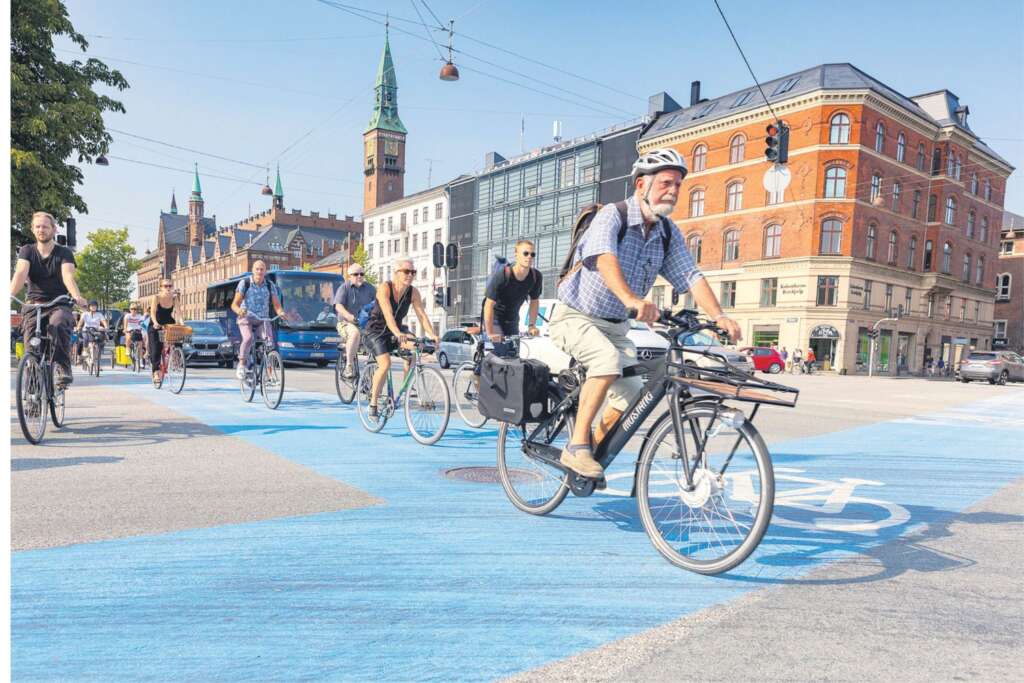Share This Article
As someone who’s obsessed with how cities breathe, move, and function, I couldn’t help but fall in love with Copenhagen’s cycling culture. It’s often named the most bike-friendly city in the world—and for good reason. But what makes it such a benchmark for urban mobility? Is it just about bike lanes? Or is there more to it?
Let’s break it down.
1. A City Designed for the Cyclist, Not Just the Car
In most cities, cyclists feel like second-class citizens—squeezed between traffic and sidewalks, dodging honking cars. Not in Copenhagen. Here, the city has been deliberately designed with bikes in mind. There are over 390 kilometers of dedicated cycle tracks—and they’re not just painted lanes. These are physically separated from car traffic and elevated from sidewalks, creating a safe and seamless experience.
This isn’t just design; it’s policy in action.
2. Bicycle Infrastructure That’s Actually Thoughtful
Copenhagen doesn’t just install bike lanes—it thinks about how people use them.
- The “green wave” system times traffic lights to the average cycling speed during rush hour, so you can ride continuously without hitting red lights.
- At busy intersections, cyclists have dedicated traffic signals and waiting zones ahead of cars—so they’re visible and prioritized.
- Bridges like Cykelslangen (The Bicycle Snake) are designed purely for cycling—functional, but also fun and Instagrammable.
This level of design detail communicates one thing: you belong here.
3. Culture That Normalizes Biking for Everyone
It’s not just hipsters and hobbyists riding in Copenhagen. Children bike to school. Elderly people bike to the market. Business professionals cycle in suits. There’s no special gear, no lycra uniform. It’s simply how people get around.
Cycling isn’t a subculture—it’s the culture.

4. Safety Stats That Speak Volumes
Because of consistent infrastructure and urban planning, Copenhagen is one of the safest places in the world to bike. According to the City of Copenhagen, only one serious bike-related accident occurs per 1.44 million kilometers cycled. That’s not a typo. The city has also committed to becoming carbon neutral by 2025, and its bike culture is a big part of that strategy.
5. Support Systems Beyond the Saddle
Being bike-friendly doesn’t stop at infrastructure. The city provides:
- Heated bike lanes to prevent ice buildup during winter
- Bike parking facilities that rival multi-storey car parks
- Bike repair stations scattered across the city
- Rental schemes like Bycyklen, offering electric city bikes with built-in tablets
It’s a comprehensive ecosystem—not just a path to pedal on.

6. How Other Cities Can Learn From Copenhagen
Copenhagen didn’t become a cyclist’s dream overnight. It took decades of citizen-led activism, strong political will, and consistent public investment. Cities like Amsterdam, Bogota, and even Paris have taken cues, proving that the model is transferable—with adaptation.
Key takeaways?
- Make cycling a default option, not an afterthought
- Prioritize safety and comfort
- Design for joy, not just function
Also Read – Sindalah Island NEOM: A Masterpiece of Luxury Design in the Red Sea
It’s Not About the Bike—It’s About the City
When I think of Copenhagen’s cycling culture, I’m not just thinking of bike lanes—I’m thinking of urban empathy. A city that slows down, respects movement, and puts people before cars is ultimately a more liveable place for everyone.
So yes, Copenhagen is the world’s most bike-friendly city. But more importantly, it’s a model of how design and policy can shape better urban lives.

